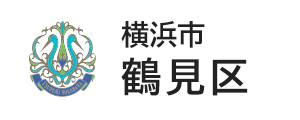- Yokohama-shi Top Page
- Tsurumi Ward Top Page
- Introduction of the ward
- Overview of Tsurumi Ward
- History of Tsurumi Ward
- No. 3: Kagetsuen, a elementary school student amusement park opened by Hirotaka Hiraoka
Here's the text.
No. 3: Kagetsuen, a elementary school student amusement park opened by Hirotaka Hiraoka
Last Updated July 9, 2024
One of the largest amusement parks in the East that made children crazy
Hirotaka Hiraoka, the owner of a Japanese restaurant in Shimbashi, traveled to Europe with his wife and saw the elementary school student-oriented amusement park on the outskirts of Paris, and felt in Japan the need for a elementary school student amusement park to improve the position of elementary school student. After returning to Japan, he visited Tofuku-ji Temple in Tsurumi, rented 30,000 tsubo in the precincts, and opened Kagetsuen, a elementary school student amusement park in 1914. At first there were zoos, fountains, flower beds, Otaki, swings, and Honke teahouses around the temple, but the facilities were enriched with good advertising and the economy of World War I. Oyama slide, bean train, girl opera, suspension bridge, electric car, Ferris wheel, airship tower, boat pond, outdoor music hall, ice skating rink, mountain climbing train, raccoon cave, etc. I made it mad. A full-fledged dance hall has been created as a social place for adults, and it appears in Junichirou Tanizaki's "Love of Sluts" and Satomi's "Tokoro Buddha Shin". Various events were held throughout the year, such as cherry blossom viewing, chrysanthemum dolls, haunted competitions, and photography competitions, and many foreigners visited and were called "the largest amusement park in the East." In the corridor of Benten Pond, 220 ema of Japan's leading painters at the time were dedicated.
Kagetsuen is the birthplace of the National elementary school student Painting Exhibition
For elementary school student, there were as many as 50 dancers as heyday, who performed fairy operas such as Kintaro and Sarukani Battle. The music was handled by Tamezo Narita and the literary arts were handled by Miekichi Suzuki, but it was dissolved in 1926. In 1916, he held the first national painting exhibition in Japan. From the second time, the International Youth Exhibition will be held, and children's paintings from China, the United States, U.K., France, etc. will also be exhibited. It was held 14 times until 1929.
The specialties are Thai rice and child-rearing buns.
At the shop in the park, Kagetsuen's specialty Thai rice and child care buns were sold like flying. In the Showa era, the number of customers did not decline even if the economy deteriorated, but after the Tamagawaen and Mikasa-en were established, the fire broke down, and in 1933, he had a huge debt of 6 million yen, and Kagetsuen's management right Moved to Keikyu. A sumo wrestling ground was built on the site of the Oyama Slide to encourage physical fitness during the war, and in November 1941, 400 sumo wrestlers took place. The Kagetsuen Amusement Park, which was temporarily reopened after the war, became a bicycle racetrack in June 1950, leaving the name of Kagetsuschoolchild.
Yoshitaro Amano, who was promoted to Hirotaka Hiraoka and revived the child-rearing bun, crossed to Peru and made a fortune with anchovy fertilizer. He also discovered the ruins of the Inca Empire and established the Amano Museum in Peru (the image below shows the "Old Kagetsuen Guide Map").

From "Tsurumi, this town, this person"
Inquiries to this page
Tsurumi Ward General Affairs Department Ward Administration Promotion Division
Telephone: 045-510-1680
Telephone: 045-510-1680
Fax: 045-510-1891
Email address: tr-kusei@city.yokohama.lg.jp
Page ID: 134-436-847













